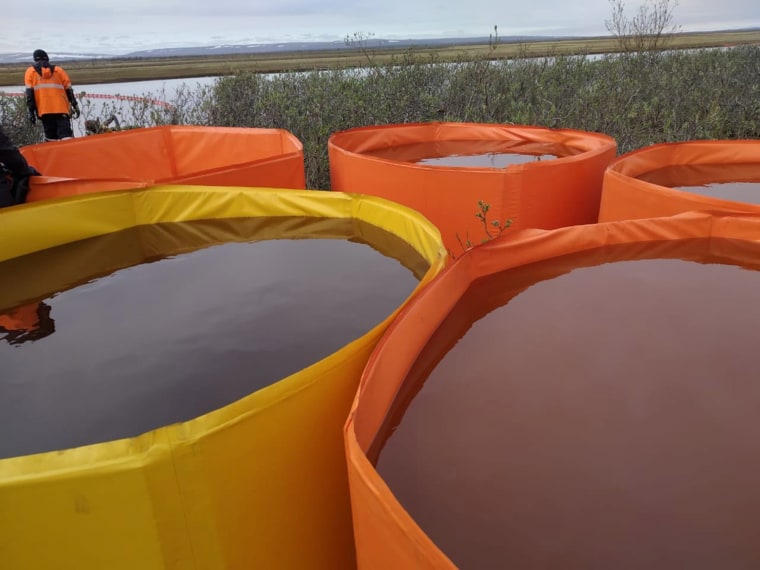MOSCOW — A major clean-up operation has been launched in Siberia after more than 15,000 tons of diesel fuel was released into a river above the Arctic circle — threatening a pristine territory through a series of lakes and tributaries.
Russian President Vladimir Putin declared a federal emergency Wednesday after berating Siberian officials for their slow response to the accident which took place near the city of Norilsk on May 29. While the majority went into the river, a further 5,000 tons of diesel was released onto land.
Describing it as “the first ecological incident of such a large scale above the Arctic circle,” Greenpeace Russia has warned that it could contaminate a vast swath of Russia’s Arctic for years if not properly contained.
Due to the remote nature of the incident, news of the disaster was slow to trickle out and reach Moscow.
The regional governor of Krasnoyarsk, Alexander Uss, said in the meeting that he only became aware of the situation on Sunday after “alarming information appeared in social media." Other officials echoed his claim.
In an unscheduled televised meeting devoted to disaster management, a normally cool and collected Putin, was visibly angered and lashed out at Sergei Lipin — the head of NTEK, a subsidiary of Nornickel that owns and operates the storage facility where the ruptured tank is located.
“Why did government agencies only find out about this two days after the fact?” Putin demanded. “Are we going to learn about emergency situations from social media? Are you healthy over there?”
Nornickel, the owner of the storage facility that was responsible for the spill, said in a statement on Tuesday that it notified authorities in a timely manner and that the cause of the spill was a rupture in a large diesel storage tank at a subsidiary power plant.
“The accident was caused by a sudden sinking of supporting posts in the basement of the storage tank,” the statement said.
State media outlets linked this to melting permafrost in Siberia, which is currently experiencing historic warmth.

The regional prosecutor’s office of Krosnayarsk region, which is conducting a criminal investigation to determine who is responsible for the disaster, said the spill covers about 44 acres of water.
The head of Russia’s environmental protection agency said that the distance from spill to containment booms set up downstream is about 12 miles and every branch and tributary between those two points is covered in a thick layer of fuel — raising contamination levels to more than tens of thousands times their norm.
Greenpeace Russia director Vladimir Chuprov said in the statement on Wednesday, that the environmental impact could result in hundreds of millions of dollars of damages — to say nothing of the impact to local wildlife. He also cast doubt on current cleanup efforts.
“With the help of installed booms, only a small fraction of the pollution can be collected, so it can be argued that almost all diesel fuel will remain in the environment,” he said.
Russian officials have yet to elaborate on plans to fully clean up the spill once contained. During Wednesday’s meeting, some officials suggested burning the slick — but others noted this could in itself cause severe damage.
Complicating efforts are the remote nature of the river. There are few roads that can support heavy cleanup equipment and its shallow depth means traditional cleanup barges cannot access the affected areas.
Without elaborating on what it might be, Russia’s Emergency Services Ministry chief, Yevgeny Zinichev, said Thursday: “I think a solution has been found."
